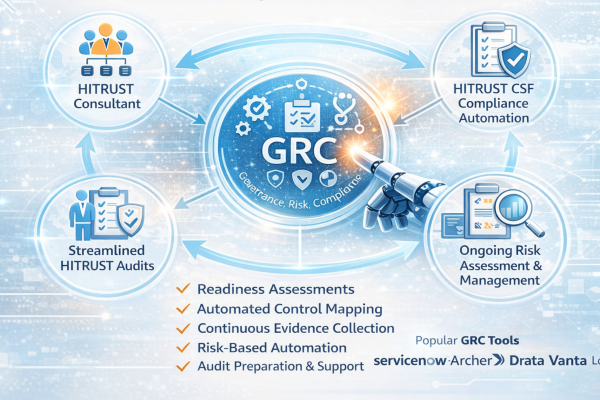The Ultimate Guide to Cloud Infrastructure Automation
Introduction
In today’s fast-paced digital world, businesses are continually seeking ways to streamline operations, enhance efficiency, and reduce costs. One significant advancement that has revolutionised the way companies manage their IT resources is cloud infrastructure automation. By leveraging cloud infrastructure services, organisations can automate repetitive tasks, optimise resource allocation, and improve overall productivity. In this comprehensive guide, we will explore the essentials of cloud infrastructure automation, its benefits, tools, best practices, and how it can transform your business.
What is Cloud Infrastructure Automation?
Cloud infrastructure automation refers to the process of using software tools and scripts to automate the management, deployment, and scaling of cloud resources. This involves automating various tasks such as server provisioning, configuration management, application deployment, and monitoring. By automating these processes, businesses can reduce the manual effort required to manage their cloud environments, leading to increased efficiency and reduced risk of human error.
Benefits of Cloud Infrastructure Automation
- Improved Efficiency: Automation eliminates the need for manual intervention in repetitive tasks, allowing IT teams to focus on more strategic initiatives. This leads to faster deployment times and a more agile infrastructure.
- Cost Savings: By automating resource management, businesses can optimize their cloud usage, ensuring that they only pay for what they need. This helps in reducing unnecessary expenditures and maximizing return on investment.
- Consistency and Reliability: Automated processes ensure that tasks are performed consistently every time, reducing the risk of human error. This ensures more reliable and predictable outcomes.
- Scalability: Automation makes it easier to scale cloud resources up or down based on demand. This flexibility ensures that businesses can handle varying workloads without overprovisioning resources.
- Enhanced Security: Automated scripts and tools can help in enforcing security policies consistently across the infrastructure. This helps in identifying and mitigating security risks more effectively.
Challenges in Cloud Infrastructure Automation
1. Infrastructure as Code (IaC)
IaC is a fundamental principle of cloud infrastructure automation. It involves defining and managing infrastructure through code, allowing for version control, reproducibility, and automation. Tools like Terraform, AWS CloudFormation, and Azure Resource Manager are popular choices for implementing IaC.
2. Configuration Management
This involves automating the setup and maintenance of software configurations across servers. Tools like Ansible, Chef, and Puppet enable the automation of configuration management, ensuring that all systems are configured consistently.
3. Continuous Integration and Continuous Deployment (CI/CD)
CI/CD pipelines automate the process of integrating code changes, testing, and deploying applications. This ensures that new features and updates are delivered quickly and reliably. Jenkins, GitLab CI, and CircleCI are commonly used CI/CD tools.
4. Monitoring and Logging
Automated monitoring and logging tools help in tracking the performance and health of cloud resources.This enables proactive detection and resolution of issues. Prometheus, Grafana, and ELK Stack are popular monitoring and logging solutions.
5. Auto-scaling
Auto-scaling involves automatically adjusting the number of running instances based on demand. This ensures that applications can handle varying workloads efficiently. AWS Auto Scaling, Google Cloud AutoScaler, and Azure VM Scale Sets are examples of auto-scaling services.
Popular Tools for Cloud Infrastructure Automation
- Terraform: An open-source IaC tool that allows you to define and manage infrastructure across multiple cloud providers using a declarative configuration language.
- Ansible: A configuration management tool that automates the provisioning, configuration, and deployment of applications. It uses a simple, human-readable language called YAML.
- Jenkins: A widely-used CI/CD tool that automates the process of building, testing, and deploying code. It supports a wide range of plugins and integrations.
- AWS CloudFormation: A service that allows you to define and manage AWS infrastructure using templates written in JSON or YAML.
- Kubernetes: An open-source container orchestration platform designed to automate the deployment, scaling, and management of containerized applications.
Best Practices for Cloud Infrastructure Automation
- Start Small and Scale Gradually: Begin with automating simple tasks and gradually move towards more complex processes. This enables early identification and resolution of issues.
- Use Version Control: Store your automation scripts and configurations in a version control system like Git. This ensures that you have a history of changes and can roll back to previous versions if needed.
- Implement Testing and Validation: Before deploying changes to production, ensure that your automation scripts are thoroughly tested. This helps in identifying and fixing issues before they impact your live environment.
- Document Everything: Maintain detailed documentation of your automation processes, including scripts, configurations, and dependencies. This makes it easier for team members to understand and contribute to the automation efforts.
- Monitor and Optimize: Continuously monitor the performance of your automated processes and optimize them for better efficiency. Use monitoring tools to track resource usage, performance metrics, and potential issues.
Challenges in Cloud Infrastructure Automation
- Complexity: Automating a complex infrastructure can be challenging, especially if you have a mix of on-premises and cloud resources. It requires careful planning and coordination.
- Security Risks: Automation scripts can introduce security vulnerabilities if not properly secured. It is crucial to follow security best practices and regularly review your automation code for potential risks.
- Skill Gap: Implementing cloud infrastructure automation requires a certain level of expertise in scripting, coding, and cloud services. It may be necessary to invest in training and upskilling your IT team.
- Tool Integration: Integrating different automation tools and services can be challenging, especially if they are from different vendors. Ensuring seamless integration requires careful planning and testing.
Conclusion
Cloud infrastructure automation is a game-changer for businesses looking to optimize their IT operations, reduce costs, and enhance efficiency. By leveraging cloud infrastructure services and following best practices, organizations can achieve significant improvements in deployment speed, reliability, and scalability. While there are challenges to overcome, the benefits far outweigh the risks. As technology continues to evolve, the future of cloud infrastructure automation looks promising, with innovations in AI, serverless architecture, and multi-cloud strategies leading the way.
Investing in cloud infrastructure automation is not just a trend but a necessity for businesses aiming to stay competitive in the digital age. Start your automation journey today and transform the way you manage your cloud resources for a more agile, efficient, and cost-effective future.
Author






